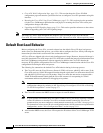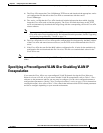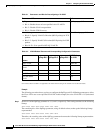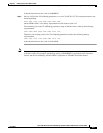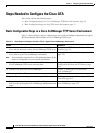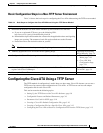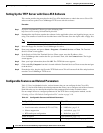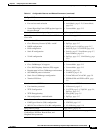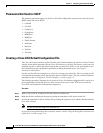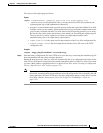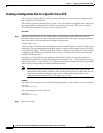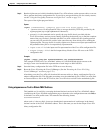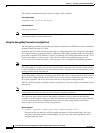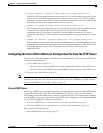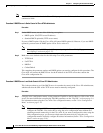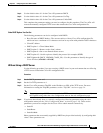
3-10
Cisco ATA 186 and Cisco ATA 188 Analog Telephone Adaptor Administrator’s Guide (SCCP)
OL-3141-01
Chapter 3 Configuring the Cisco ATA for SCCP
Configuring the Cisco ATA Using a TFTP Server
Parameters Not Used for SCCP
The following parameters appear on the Cisco ATA Web configuration screen but are used only for the
MGCP image and not for SCCP:
• CA0UID
• CA1UID
• CfgInterval
• CodecName
• MGCPPort
• MGCPVer
• NumTxFrames
• PrefCodec
• RetxIntvl
• TetxLim
• ToConfig
Creating a Cisco ATA Default Configuration File
The Cisco ATA release-software zip files includes a file called atadefault.cfg, which is a binary file that
contains all the default parameters for the Cisco ATA. However, you likely will need to create your own
atadefault.cfg file to contain the default settings that you want Cisco ATAs in your environment to use.
For information on each configuration parameter, including all default values, see Chapter 5,
“Parameters and Defaults.”
Use the text file called sk_example.txt as a basis for creating your default file. The sk_example.txt file
is included in the software-release zip file and contains all default values. This file is shown without its
annotations in the “Configuration Text File Template” section on page 5-2.
The following procedure illustrates how to create the Cisco ATA default configuration file, convert it to
the required binary format that the Cisco ATA can read, and store it on the TFTP server so that the
Cisco ATA will download it during the boot-up process:
Procedure
Step 1 Make a copy of the sk_example.txt file and rename it atadefault.txt.
Step 2 Make the desired configuration changes by editing the atadefault.txt file, then save the file.
Step 3 Convert the atadefault.txt file to a binary file by running the cfgfmt.exe tool, which is bundled with the
Cisco ATA software.
Note Be sure to name the output file atadefault.cfg.
If you wish to encrypt the binary file for security reasons, see the “Using the EncryptKey Parameter and
cfgfmt Tool” section on page 3-14.



